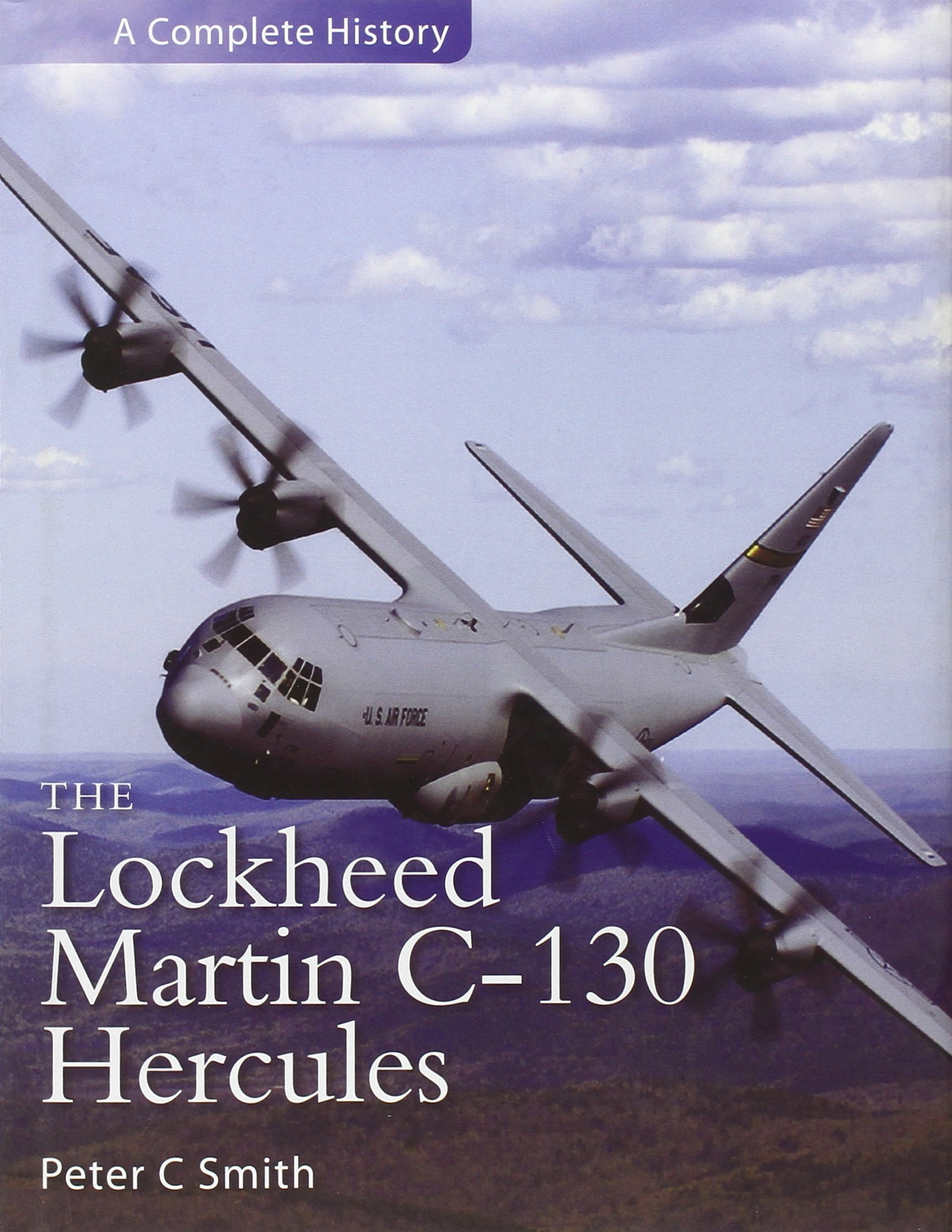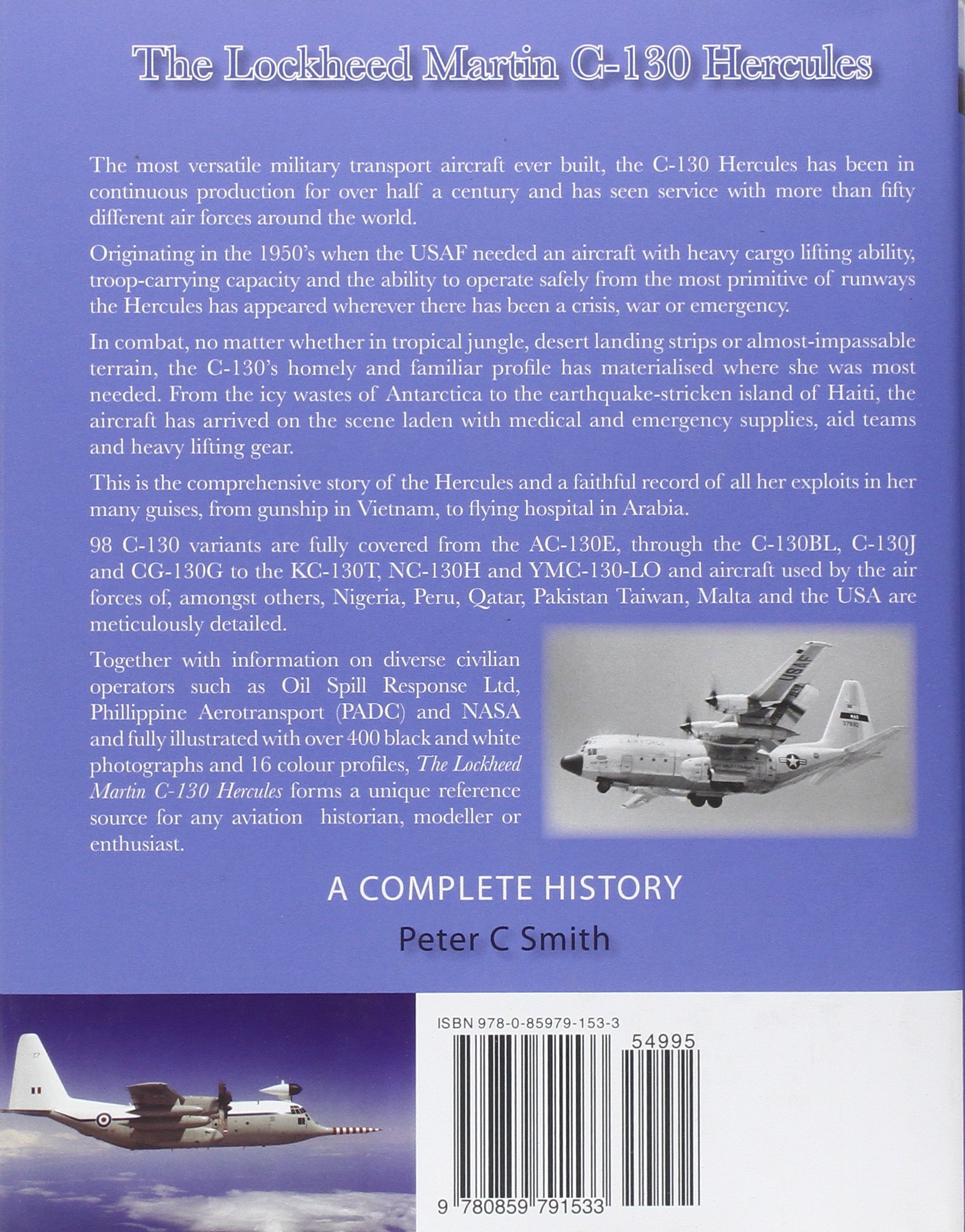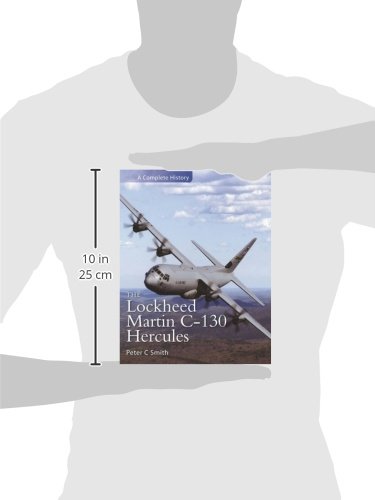



Full description not available
S**T
C-130 Hercules, a[n in]complete History
Do not let this be your first book about the Hercules. It's short of development history and user exploits, what's there is just a tease that leaves you wanting more. It is, however, a great choice for the already knowlegeable and who want things like serial numbers, constructor numbers and civil registrations. You'd be surprised at how many countries operate the C-130. The author's access to factory documents allowed him to keep track of aircraft throughout skeevy dealings that allowed countries like Iran and Libya to acquire the Herk, as well as the civilian operators who ran arms to Africa and the CIA with their Air America operation.Luckily, the author provides a decent bibliography that can lead you to books to satisfy your desire to get the basic history of this important aircraft and specific stories like Air America.Be aware this book should have been proof-read better than it was before publication. There are more than a dozen dumb errors to irritate you, including two which call some facts into question.
P**S
Not a recommended reading
Despite it being a resounding commercial success, there are not a lot of monographs on Lockheed's famous C-130. Peter Smith's intention was to fill a gap, providing a one-stop reference to all versions and operators of the Hercules and it quickly proved a disappointing buy. Clearly, the book was written hastily and without factual and grammatical checking, which is all the more surprising as it is a second edition of a book on the same subject by the same author. It is riddled with countless errors and mistakes on both contents and form, which disqualifies the volume as the reference on the C-130. Just to quote a number that I could identify just by browsing through the book :Chapter 2All of USCG rescue HC-130H's are erroneously described as navigation/electronics platforms (whatever that means), while only the HC-130B's are described as rescue aircraft. USCG is a search & rescue organisation; logically, the bulk of its C-130 fleet operates in that role; only two aircraft (EC-130E 1414 and EC-130V 1721) ever operated in non-rescue roles (navaid calibration and radar test-bed respectively).Chapter 3p.196 : the description of the E flight of 21st Tactical Control Squadron is completely erroneous. There was indeed such a unit, but it was E Flight, 21st Troop Carrier (later Tactical Airlift) Squadron, and it operated from Yokota AB in Japan, never in Europe. USAF's corresponding unit in Europe was 7405th SS in Rhein-Main AB.p.212 : all the Saudi's AEH C-130H's are shown as carrying the same call-sign, 7T-WHZ; obviously, they all carry a different one, and certainly not 7T-WHZ which belongs to an Algerian AF aircraft.p.218 : US Navy's fleet of C-130T's is incorrectly shown as belonging to the US Marine Corpsp.219 : there never was a CG-130G variant; what is correct is that the four EC-130G's were initially designated as C-130G's, in order to hide their strategic communications role.p.222 : USCG's EC-130E 1414 was never known as an EC-130S.p.226 : USCG's HC-130B's were never designated as HC-130G's; they initially were known as R8V-1G's, then SC-130B's then HC-130B's.p.238 : the USN/USMC serial numbers are known as Bureau of Aeronautics (BuAer), not as Bureau of Ordnance (BuOrd) numbers. The error is repeated throughout the book.p.244 : RC-130B was an alternate (and more correct) designation for the classified C-130B-II; it was not a modification of the aircraft.Chapter 4 : Worldwide operatorsA first, general remark, is that the order of handling the countries is rather confusing : the United Arab Emirates will be found under "Abu Dhabi & Dubai", i.e. as the first country in the alphabetical order, while Jordan will be found under "Royal Jordanian Air Force", i.e. in the R alphabetical sequence. For Canada, the former "Royal Canadian Air Force" name is used instead of the "Canadian Armed Forces" name, in force since 1968! A more logical order would have been based consistently on the country name, possibly followed by the air arm name (in English, then national language - both are used haphazardly in the book). As far as the latter is concerned, too many of these names are incorrectly spelled, or simply wrong. Also, in several cases, serial numbers are confused with IATA radio call-signs or squadron codes. A few cases :p.252 : Belgium : the latest aircraft acquired only carried the CH-14 serial number for a few months, in a known case of superstition; it entered service correctly serialled as CH-13; by the way, the author ignores the Flemish name of the air force (Belgische Luchtmacht), and that it has been redesignated as Belgian Air Component since.p.255 : Brazil's AF is known as Força Aérea Brasileira (not Brasileria); the author should just have read the titles on the C-130 illustrated just above to be sure.p.256 : Central African Republic's AF is known as L'Armée de l'Air des Forces Armées Centrafricaines (not as L'Armée de l'Air of the Forcesarmée Centralaficines, which mixes English and botched French in the title)p.259 : Egypt : most Arab air forces are titled as "Al Quwwat Al Jawwiya ..."; after spelling that correctly for Algeria, the author botches up most other cases (Egypt, Iraq, ...p.261 : France : all French C-130's are operated by ET.02/061 (not RET 02.621) "Franche Comté" at Orléans; they are coded in the 61-Px sequence, which reflect (rather than replace) their F-RAPx radio call signs.p.262 : Greece : by the time the first C-130's were delivered, the Hellenic Air Force (Elliniki Polemiki Aeroporia) had long surrendered its "Royal" (Vassiliki) adjective. The titles are therefore incorrect. By the way, the first four aircraft were acquired direct from the manufacturer; they are not former USAF aircraft. The following eight were acquired through US Foreign Military Sales, hence they did receive USAF serial numbers; they were however never operated by the USAF and are therefore not diverted USAF aircraft. The error is repeated elsewhere, the author apparently confusing FMS serial allocations for proof of USAF operation.p.270 : Italy : the author again confuses the 46-xx unit codes for serial numbers (which are the MM-numbers)p.278 : Nigeria : the Nigerian Air Force does not have the "Federal" adjectivep.279 : Pakistan : the correct abbreviation of Pakistan's Air Force is PAF, not PSAFp.280 : Peru : Fuerza Aérea Peruana, not "Fuerza Aéra Perunana", both in the title as in the text that followsp.283 : Romania : Fortele Aeriene Române, not "Fortele Aderiene Romaniei"p.303 : Jordan : the correct name is Al Quwwat Al Jawwiya al Urduniya; the author omits the very name of the country in the Arab designationp.317 : Spain : again, the author confuses the unit codes (310-xx, 311-xx, 31-xx) with the aircraft serial numbers T.10-xx, TK.10-xx, TL.10-xx, which the aircraft have kept since they were taken on charge. By the way, the air arm name is Ejército del Aire (abbreviated as EdA)Photographs do not fare batter. Many of them suffer from tail- or nose-clipping, poor focus or oblique horizon (such as the series on pp.82-85); some of them are used twice (such as HC-130H 65-0985 taking off from Hickam AFB used on pp.81 and 209; in other cases, poor shots, probably from the window of a taxiing airliner are used repeatedly while good quality shots of the same aircraft type are abundant on the market (eg the Pennsylvania ANG EC-130's on pp.116-117). At least one shot is inverted (KC-130F 149807 on p.177, also errouneously captioned as 1492807). Quite surprisingly, the author shows no less than 18 shots of the single BLC C-130B on pp.101-108), some of them almost identical to each other, others mainly showing an airshow crowd, using up space that could have been used to show variants that are not illustrated such as the XFC-130H.Finally, some captions are simply erroneous : an obvious case is AFSC's JC-130B shown on p.82, quoted as an ARRS HC-130H, while the author himself uses a very similar shot of a JC-130B on p.131, correctly captioned there; the error is repeated on p.210, where another JC-130B is shown as an HC-130H. Another one is the Israeli DF/AF C-130E 304 shown as an USAF aircraft "during Kuwaiti operations".All these readily identifiable errors and mistakes discouraged me to read the book fully, which would certainly have multiplied the cases. This disqualifies the book as a (let alone THE) credible reference on the C-130. As far as I am concerned, the author did not thoroughly research a subject that he obviously is very unfamiliar with; as his bibliography shows, modern-day military aviation is not his forte. The publisher's quality control ability is also to be questioned, if only for the many English grammatical and spelling errors (and the photographic quality). Both the Author and the publisher probably went in for the quick buck, and I was too quick buying it, trusting Crécy's good name.Not a recommended reading, I'm afraid.Ph. Lamberts
Trustpilot
3 days ago
2 weeks ago